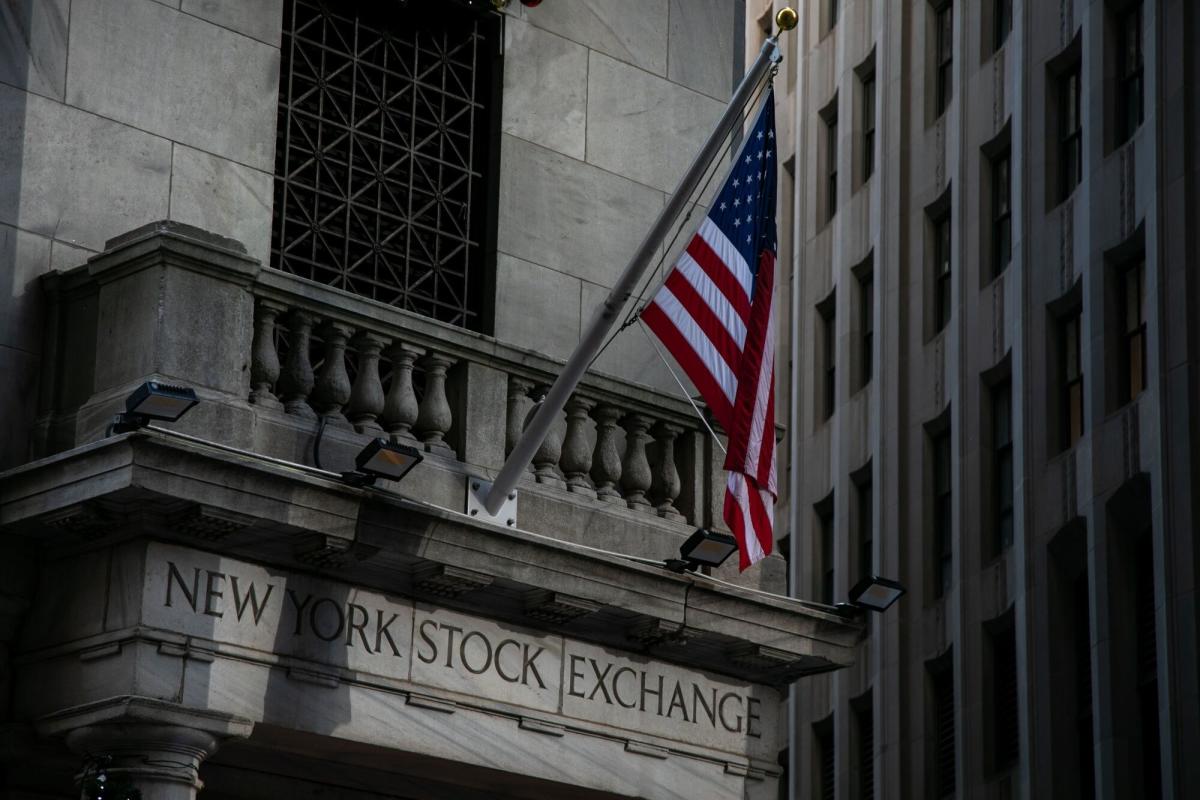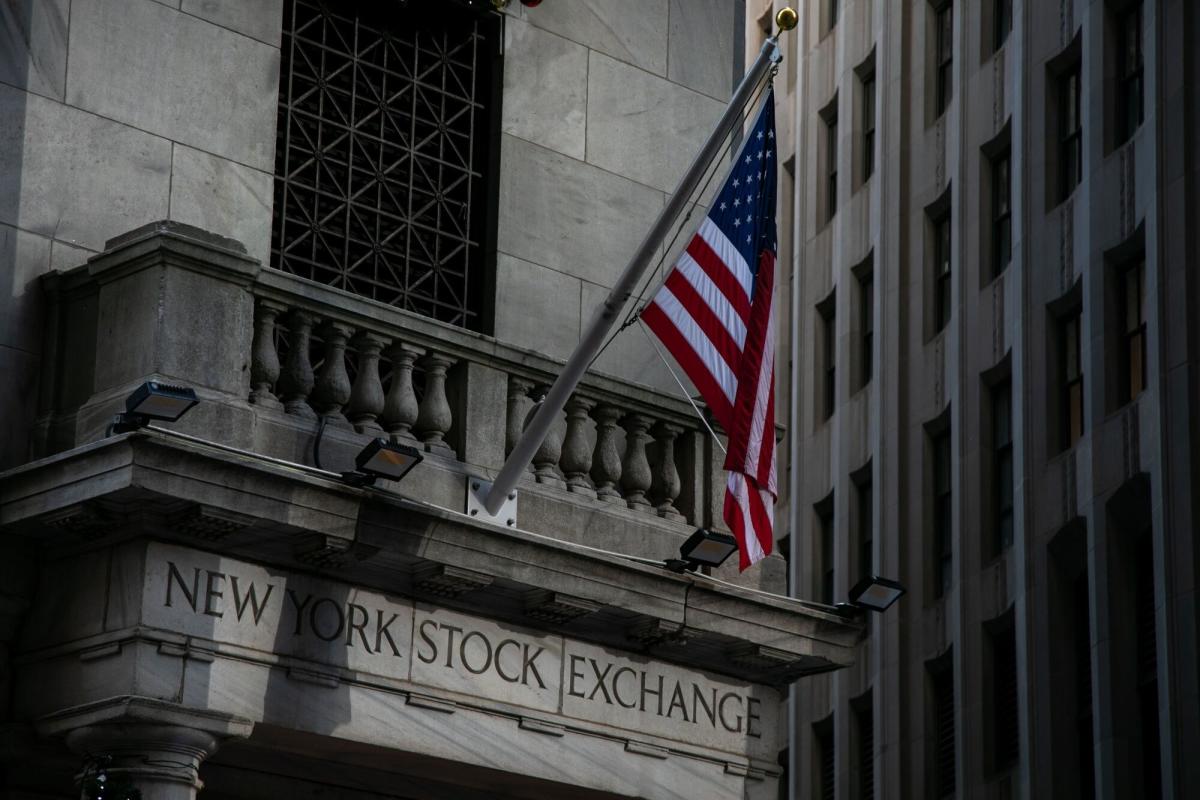
(Bloomberg) — A rally that briefly drove stocks to their all-time highs bumped into a wall as the Federal Reserve signaled it’s not in a rush to ease policy after cutting rates by a half-point.
Most Read from Bloomberg
The S&P 500 wiped out a gain of as much as 1% as Jerome Powell cautioned against assuming big rate cuts would continue. While that’s not necessarily bad given that aggressive easing is usually associated with economic stress, traders ended up pushing equities near session lows at the 4 p.m. New York close.
“After a rally ahead of today’s Fed announcement, it wouldn’t be unreasonable for the market to pull back a bit,” said Bret Kenwell at eToro. “However, the long-term outlook remains promising. So long as the economy holds up and inflation doesn’t roar back to life, lower rates and strong earnings growth can continue to drive stocks higher over the long term.”
To Ian Lyngen and Vail Hartman at BMO Capital Markets, Powell’s press conference was consistent with the magnitude of the cut and effectively communicated that officials aren’t particularly worried about any aspect of the real economy at the moment.
“It’s impressive that in the classic, ‘buy-the-rumor, sell-the-fact’ dynamic, the ‘fact’ of a 50 basis-point cut was still met by selling. Positions are being squared and the market is moving back into the mode of trading the incoming economic data with an eye to the potential influence from the presidential race.”
The S&P 500 fell 0.3%. The Nasdaq 100 dropped 0.5%. The Dow Jones Industrial Average lost 0.2%. A gauge of the “Magnificent Seven” megacaps slid 0.1%. The Russell 2000 of small firms was little changed.
Treasury 10-year yields advanced seven basis points to 3.71%. The dollar rose.
Wall Street’s Reaction to Fed:
It now will be a battle between market expectations and the Fed, with employment data — not inflation data — determining which side is right. Since this policy move was mostly telegraphed, there is no outsized move in financial markets. Now, everyone is back to data dependency.
The Fed comes in strong with a large rate cut, while trying to reassure the economic outlook is strong. But the two facts don’t jive well together. Be careful, a big rate cut in a slowing environment has always preceded a market drop. It’s possible we’ve seen the peak of the market today.
History shows the market peaks very close to the first rate cut. In fact, the market might be peaking just at the rate cut this time. Be wary of your equities. The times, they are a-changing.
The big move out the gates takes out some insurance on the soft landing, is risk on, and should particularly benefit risky assets geared into the cycle, such as small caps, cyclicals, commodities and commodity currencies.
The Fed was more aggressive than I expected, since 50 basis point cuts are historically associated with crises.I don’t consider 2% GDP, 4.2% unemployment rate, and 15% profit growth forecasts for 2025 as a crisis. As a result, I’m still skeptical of the extent of expected rate cuts next year.
Lower market interest rates should help housing and employment.
We look for traditional beneficiaries including small caps, value, cyclical sectors, and the equally-weighted S&P 500 Index to experience tailwinds.
The Fed front-loaded this rate cutting cycle with a jumbo 50 bps rate cut and signaled in their statement that they are focused squarely on the labor market, saying they are “strongly committed to supporting maximum employment”
Although they pay lip service to the other part of their dual mandate (i.e. inflation), clearly they have taken their eye off that ball and although inflation is much lower now than the peak we saw in 2022, igniting a stock market rally and goosing a growing economy with lower rates risks letting inflation come roaring back before this bull market ends.
We believe that the market will undergo some volatility as we get closer to the election, however, lowering interest rates now – and telegraphing another 50 bps in cuts by the end of this year and a total of 150 bps more by the end of next year.
The 50bps cut should reduce the odds of a hard landing and the equity market is encouraged by that prospect, given that the economy and corporate earnings tend to move in lockstep.
Consistent with the fall in hard landing odds, cyclical sectors were leaders on the day, while defensives were laggards.
We see this as confirmation that equities can make further gains in 2025, led by U.S. large-caps and a combination of growth and cyclical sectors.
Despite the scepticism around the economic need for an aggressive 50bps cut, markets can and should only celebrate today’s move – and will continue to celebrate over coming months. We have a Fed that will go to historic lengths to avoid a hard landing. Recession, what recession?”
By cutting rates by 50 basis points (rather than 25 bps), the Fed satisfied market expectations of a larger rate cut to begin a rate cutting cycle.
The Fed has shown today that they are very concerned with trying to protect maximum employment and have effectively put inflation fears on the backburner.
What may be even more important than the magnitude of the first rate cut of this cycle is the revision to the Fed’s dot plot, pointing to a Fed ready to be aggressive with 50 more basis points of rate cuts by year-end.
Equity markets applauded the Fed’s decision to initiate its easing cycle with 50 basis points.
Given how much discussion has surrounded this move the announcement certainly wasn’t a surprise, however the lack of guidance by Fed officials indicates that although there was only one dissent there must have been a forceful discussion and work towards building a consensus.
Stocks love a good Fed put.
I think the Fed may have jumped the gun at 50 bps. The economy is slowing but still strong. My criticism of the Fed has been a myopic focus on backward looking data. This feels like that. A single weak employment report and here we are.
A 50 bps cut to start the rate cut cycle is significant because historically, the Fed was playing catch up at the start of rate cut cycles.
The message here is that the Fed’s got the labor market’s back.
The markets got what they wanted — a big first cut by the Fed. Now we’ll see if they remain satisfied. The Fed has a well-deserved reputation for not rushing, so there’s the potential for some disappointment if it’s seen to be moving too slowly, especially if economic data continues to soften. But today they delivered.
Dialing back restrictive monetary policy could extend the US economic cycle – benefiting both bonds and risk assets – but investors should pay attention to tail risks. Yet positive catalysts in a stable economic backdrop and now falling interest rates continue to line up around the “soft-landing” narrative.
Easy money from retail bank savings accounts and certificates of deposit will decline. Investors should seek to lock in higher rates for their cash with shorter-term fixed income allocations. A focus on bond market opportunity over benchmark orientation can help drive income and total return. Across the credit spectrum, both macro and spread opportunities should attract investors.
A stable economic backdrop and lower interest rates should broaden the opportunity in equities. In small-cap stocks, a favorable valuation envelope is meeting an improved 2025 earnings outlook and creating opportunities in health care, particularly biotech, along with the software sector in technology and insurance stocks in financials.
Corporate Highlights:
-
A US security panel has granted Nippon Steel Corp. permission to refile its plans to purchase United States Steel Corp., for $14.1 billion, likely pushing a decision on the politically contentious takeover past the US elections in November, according to people familiar with the matter.
-
Google won a court fight with the European Union over a €1.5 billion ($1.7 billion) fine for thwarting competition for online ads, partly making up for last week’s crushing defeat in a separate judgment for abusing its monopoly powers.
-
Qualcomm Inc. lost a European Union court fight over a multi million euro fine over allegations the US firm priced some chips low enough to squeeze out a smaller rival.
-
T-Mobile US Inc. outlined its growth ambitions for the next three years on Wednesday, forecasting higher profit fueled by customer gains and enhanced by new technologies, including artificial intelligence.
-
Elliott Investment Management still wants to replace Southwest Airlines Co. Chief Executive Officer Bob Jordan, according to a union official, suggesting changes the carrier has already promised aren’t enough to satisfy the activist shareholder.
-
23andMe Holding Co. co-founder and Chief Executive Officer Anne Wojcicki told employees that she remains committed to taking the genetic testing company private following the resignation of its independent board members.
Key events this week:
-
UK rate decision, Thursday
-
US Conf. Board leading index, initial jobless claims, existing home sales, Thursday
-
FedEx earnings, Thursday
-
Japan rate decision, Friday
-
Eurozone consumer confidence, Friday
Some of the main moves in markets:
Stocks
-
The S&P 500 fell 0.3% as of 4 p.m. New York time
-
The Nasdaq 100 fell 0.5%
-
The Dow Jones Industrial Average fell 0.2%
-
The MSCI World Index fell 0.4%
-
Bloomberg Magnificent 7 Total Return Index fell 0.1%
-
The Russell 2000 Index was little changed
Currencies
-
The Bloomberg Dollar Spot Index rose 0.1%
-
The euro was little changed at $1.1105
-
The British pound rose 0.2% to $1.3187
-
The Japanese yen was little changed at 142.46 per dollar
Cryptocurrencies
-
Bitcoin fell 0.1% to $60,055.19
-
Ether fell 1.3% to $2,314.6
Bonds
-
The yield on 10-year Treasuries advanced seven basis points to 3.71%
-
Germany’s 10-year yield advanced five basis points to 2.19%
-
Britain’s 10-year yield advanced eight basis points to 3.85%
Commodities
-
West Texas Intermediate crude fell 1.7% to $70.01 a barrel
-
Spot gold fell 0.8% to $2,549.44 an ounce
This story was produced with the assistance of Bloomberg Automation.
Most Read from Bloomberg Businessweek
©2024 Bloomberg L.P.
EMEA Tribune is not involved in this news article, it is taken from our partners and or from the News Agencies. Copyright and Credit go to the News Agencies, email news@emeatribune.com Follow our WhatsApp verified Channel



